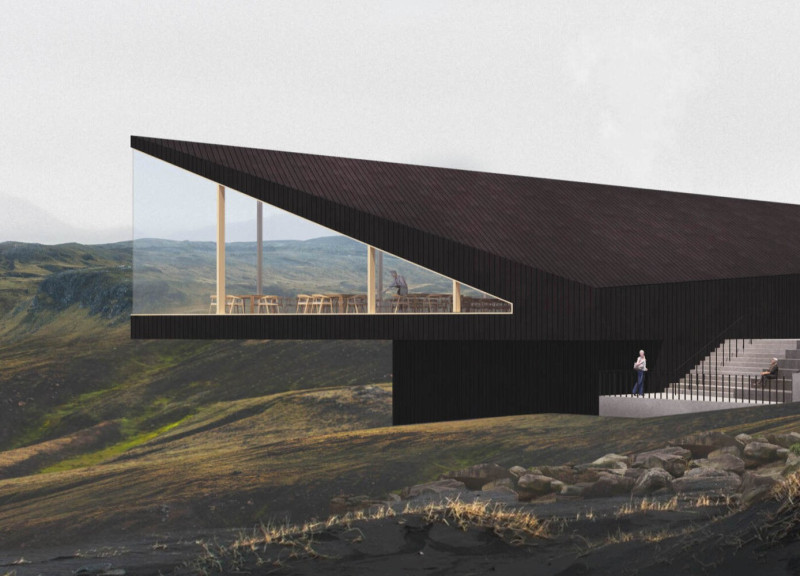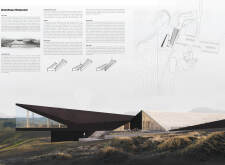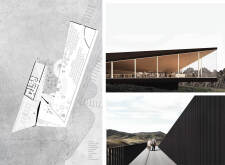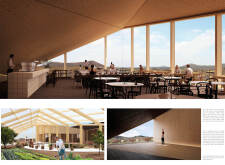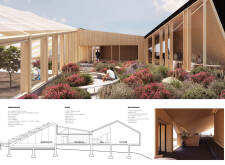5 key facts about this project
Functionally, the Greenhouse Restaurant serves as a gathering hub, encouraging community interaction through a carefully curated dining environment. The design emphasizes connections with nature, promoting farm-to-table dining experiences by incorporating a greenhouse that supplies fresh produce directly to the kitchen. This not only enhances the dining experience but also reinforces the restaurant’s message of sustainability and local sourcing.
The architectural design of the restaurant features a series of dynamic rooflines and a mix of materials that contribute to its overall aesthetic and functionality. Notably, the building’s use of timber supports offers a natural warmth, while large glass panels maximize natural light and provide unobstructed views of the surrounding landscape. This transparency invites the outside in, allowing patrons to feel a part of the natural environment while dining comfortably.
One of the key components of the restaurant is its multi-level design, which adapts to the slope of the terrain. This terraced approach not only minimizes the environmental impact by preserving the existing landscape but also creates diverse spaces for dining that cater to a variety of guest preferences. Each dining area, from casual to more intimate settings, is designed to offer unique perspectives of the landscape, further enhancing the dining experience.
The greenhouse itself is a significant element of the project, serving both as a functional area for growing produce and as an architectural focal point. This incorporation of lush greenery within the design aligns with the overarching theme of sustainability and highlights the restaurant’s dedication to using locally sourced ingredients. The greenhouse not only supports the culinary initiatives but also contributes to the building's aesthetic, presenting a vibrant contrast to the more structured elements of the architecture.
The design employs various sustainable practices, from the selection of materials to the incorporation of energy-efficient systems, reinforcing its commitment to ecological responsibility. By utilizing materials such as insulation wool and renewable timber, the project not only minimizes its carbon footprint but also promotes a healthier indoor environment for guests.
Unique design approaches in this project include the seamless integration of interiors and exteriors. Spaces are designed to be flexible and adaptable, accommodating various events and gatherings throughout the year. This versatility maximizes use while maintaining a strong connection to the environment. Moreover, the architectural strategies employed in air circulation and natural heating enhance comfort without relying heavily on mechanical systems.
In summary, the Greenhouse Restaurant exemplifies modern architectural design principles through its sustainable practices and immersive dining experience. The combination of natural materials, innovative design solutions, and thoughtful integration with the surrounding environment showcases an appealing vision for the future of hospitality architecture. For those interested in further exploring this project, viewing the architectural plans, sections, and designs can provide deeper insights into its thoughtful execution and unique ideas.


